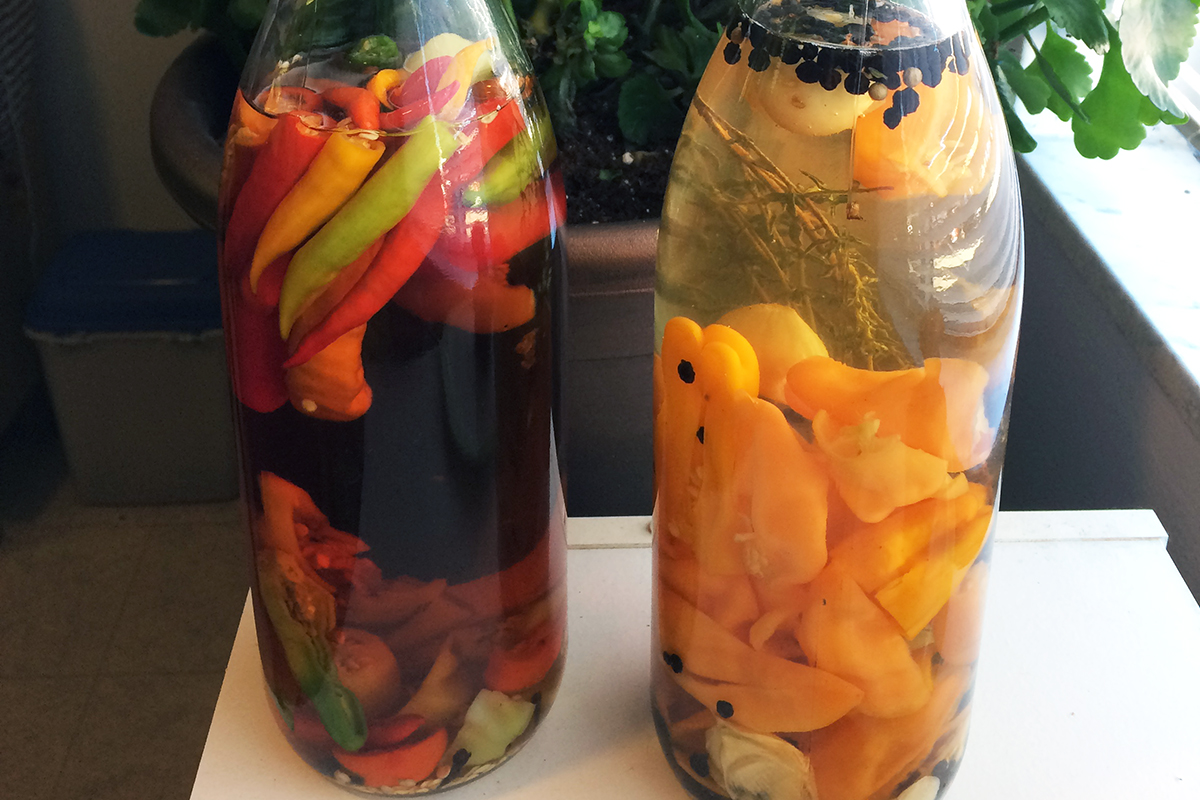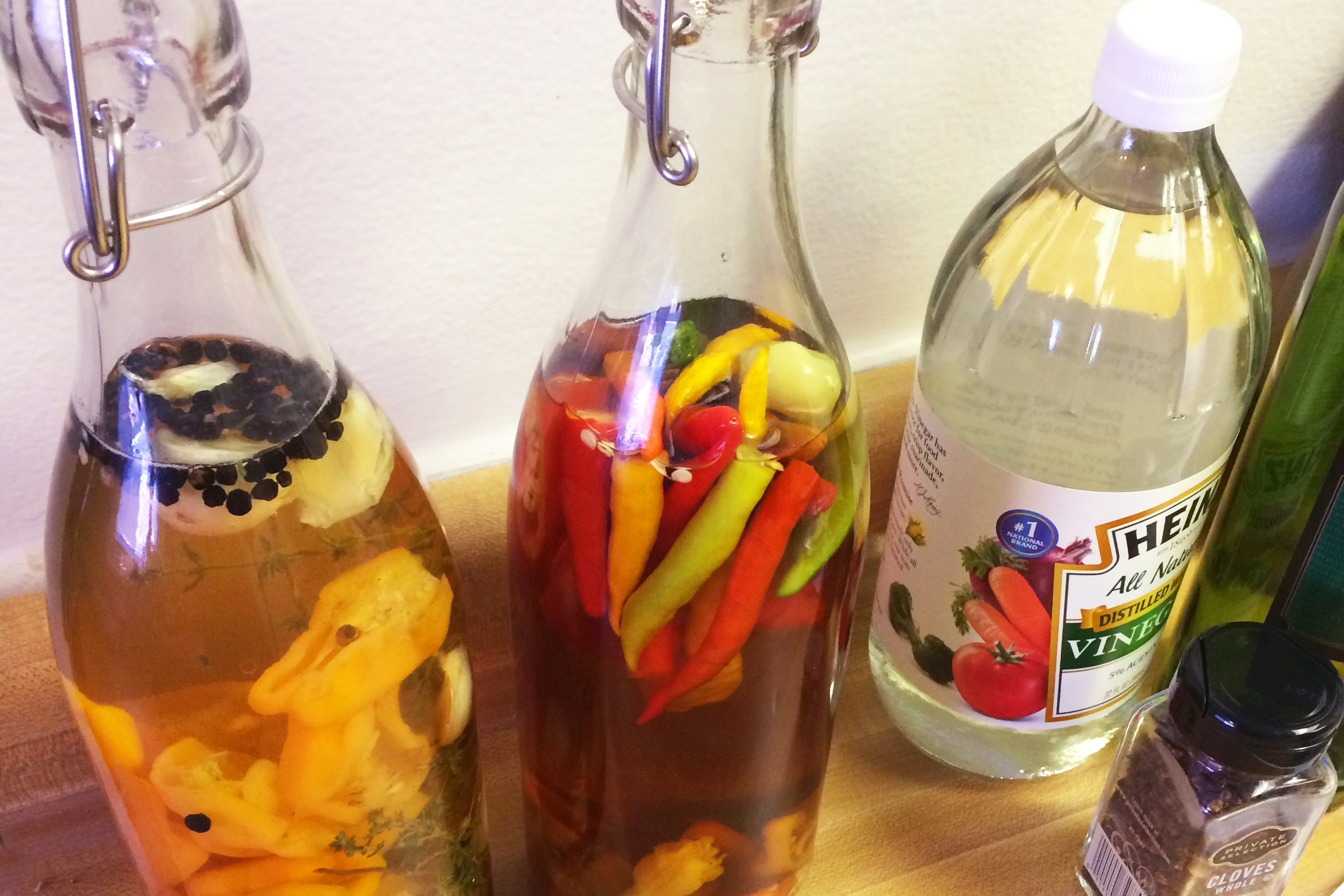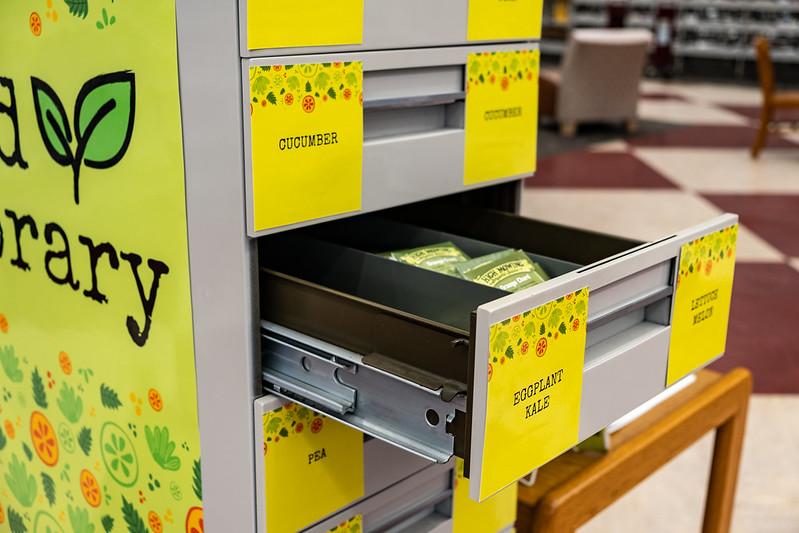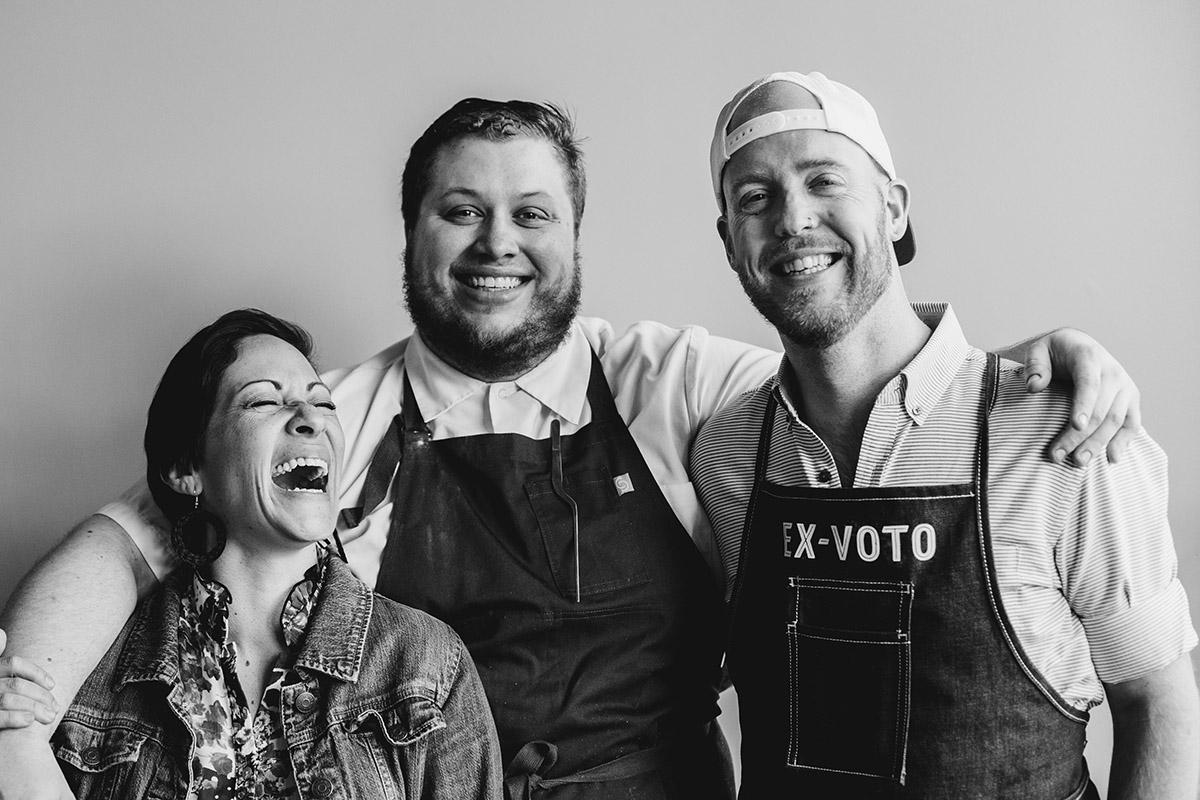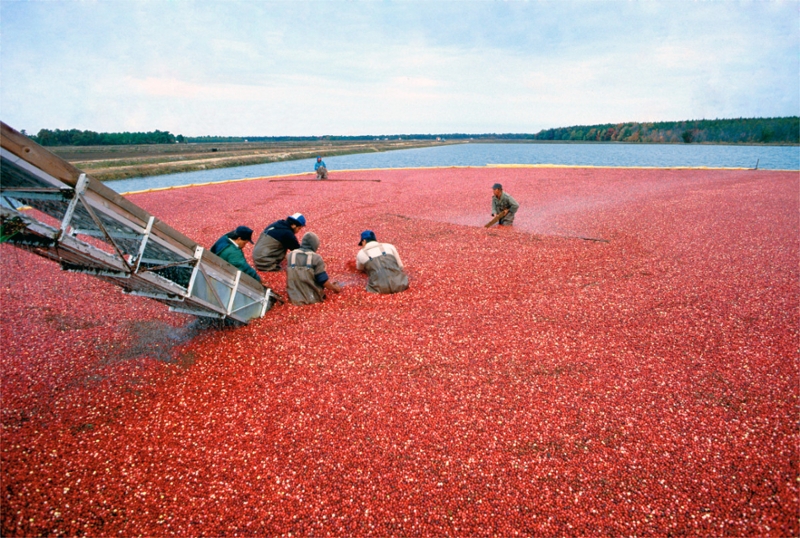Kayte Young: From WFIU in Bloomington Indiana, I’m Kayte Young and this is Earth Eats. Last week due to a technical snafu, Earth Eats didn't air as scheduled. I didn’t want you to miss out on our hot sauce story so we’ll air it this week, with some updated news.
Christopher Burrus: There are so many of those hot sauces out there that are kind of gimmick-y. And it's all about the heat. And those are nothing to me. You gotta get that good balance of flavor. KY: There are so many good ways to make hot sauce, and within every technique are hundreds of variations. Hot sauce aficionado Christopher Burrus takes us along on his first steps into hot sauce production. Starting with a Puerto Rico version called pique, that’s spelled P-I-Q-U-E. Also this week, a story from Josephine McRobbie, about a taco place with an educational mission.
That’s all coming up in the next half hour, so stay with us.
This week we have two local news stories, here’s Renee Reed.
Renee Reed: Thanks Kayte. A new seed library is now available at the Monroe County Public Library. As WFIU's Bente Bouthier reports, residents may now pick out various types of non-invasive, non-GMO food and flower seeds to take home and plant.
Bente Bouthier: Library officials say they’re looking at ideas on how to expand their existing garden services. Jane Cronkhite is the associate director at the Monroe County Library. She says the library approached the George E Archer Foundation to help fund the project. She says the seeds library will make gardening more accessible to people in the community.
Jane Cronkhite: There’s all different types of literacy, so learning about food, learning how to grow your own food, is another type of literacy.
BB: Cronkhite says the seeds are free and the program is available to anyone, even non-members. From WFIU news, I'm Bente Bouthier.
RR: A purple unicorn was escorted out of the Bloomington Community’s Farmer’s Market this weekend after protesting a vendor with ties to white supremacist groups. Five members, known as the Purple Shirt Brigade. One in an inflatable purple unicorn costume, were issued trespass and orderly conduct citations Saturday morning, after holding signs aimed at boycotting market vendor Schooner Creek Farm. Schooner Creek Farm co-owner Sarah Dye is a self-professed identitarian with links to the American Identity Movement, considered a white supremacist group by the Anti-Defamation League and as a hate group by the Southern Poverty Law Center.
Citing the first amendment, the Bloomington Farmer’s Market decided to keep Schooner Creek as a vendor in the public market, spurring the organization of an alternate private Saturday market at Bloomingfoods, a local grocery co-op on the east side of town. Last weekend wasn’t the first time the owners of Schooner Creek Farm were confronted by protesters. A group called No Space for Hate has kept an ongoing presence at the market, tabling in the designated areas of the market, encouraging customers to boycott Schooner Creek Farm. Other groups have also shown up at the market, including Three Precenters and a Black Block Formation. In July, a lone protester was arrested for holding a sign next to the Schooner Creek booth and refusing to leave when asked by the authorities.
Market rules prohibit blocking vendors, holding signs in the main market area, and general disruption of market commerce. These rules were the basis for the police action against the Purple Shirt Brigade this past weekend. Thanks to Tailor Killow (unable to find spelling on website) and Bente Bouthier for these stories. For Earth Eats - I’m Renee Reed.
KY: Thanks Renee.
CB: My name is Christopher Burrus. I’m an employee of the WFIU and a lover of hot sauce.
KY: The word amateur has its roots in the french word for love. An amateur does something not for pay, but because they enjoy doing it. Christopher Burrus is an amateur hot sauce maker. In fact, you might say he's a novice.
CB: I’m going on my first journey today of starting to make my own hot sauce. And I’m starting with a kind of hot sauce called pique, which is a really simple hot sauce to make that comes from Puerto Rico and at its most basic form its infusing vinegar with chilies. Its really the kind of hot sauce that is homemade that you mostly see on the table and in people’s kitchens, and everybody has their own version of it. And so that’s what I wanted to start with, because its so simple and there’ s a lot of different things you can do.
KY: Wait, so you say you're seeing it on everybody's table. I never see it.
CB: Yeah, yeah, I guess hot sauce lover’s tables, yeah. I do have kinda of a story that I know that my great grandfather loved pique and when I told my mom that I was gonna make this stuff. She said “Oh yeah he used to have a bottle of that stuff, all the time, he took it around with him everywhere, put it on everything” and so kind of continuing a little bit of a family tradition here as well.
KY: Alright so what are we starting with in terms of the chilies?
CB: Sure, so I’m gonna make two different kinds of pique. The first one, and the one I’m honestly looking forward to the most uses habaneros. I love the habanero pepper. Its my favorite pepper, I love the flavor of it, I love the heat level of it, I love the color of it, just everything about it and so the most traditional pique that I’m gonna make which is white vinegar with some herbs and then the habenors, that’s gonna be my first one. And the second one is going to be a little bit more of a mystery, I’m going to do a sherry based one instead of white vinegar. And then I’m using some aji chilis because they have a great fruity flavor. The aji chilis are a kind of long. They’re about... between 3 inches and 4 inches. They’re red and orange, a couple of green ones and yellow ones. They have a little bit of a wrinkly texture. They get used in a lot of piques because they’re really easy to shove down the neck of a bottle. You know, you don’t have to prepare them that much.
I think I’m gonna get some good heat with... I only have two ghost peppers in here as well, and then these kind of milder ones I think will add a lot more of that fruity flavor I’m looking for.
I knew that this was gonna come down to the flavor of the peppers more than anything else and so I wanted to try to source something good.
KY: Christopher doesn't have a garden of his own but he wanted something fresh and homegrown so he headed to the farmer’s market one Saturday morning in October.
CB: I had a really fun morning just going around to all these different vendors and talking to them about their peppers and about… its not just heat level, its like... you know, fruity tasting peppers versus grassy tasting peppers and whether or not you prefer one over the other.
And so I got a mixture here. You know the habenors have a little bit more of that grassy-ness. There’s a little fruitiness there as well, but these aji are definitely on the fruity side of things. And so it was really fun just to kind of go around and you know, treat peppers in the same way that you talk about wines.
KY: Since its not cooked, you can make pique directly in the bottle that you plan to serve it in.
CB: It becomes kind of a table piece. You have it on your table. And when people talk about making pique, they often… its interesting, they also talk about the visual component of it. That you want to make sure you get a lot of different colored chilis, so that... you know, when people look at the pique they like the way it looks. They see how vibrant the colors are. So there’s a taste aspect to it as well as a visual component too, I like that about it too.
KY: Christopher is using one-liter flip top, spring sealed glass bottles with airtight stoppers.
CB: And so we need to prepare the spice mixture that we’re gonna use first. I’ve got about nine to ten cloves of garlic here, and I’ve gotta get these peeled. You ever seen the two bowl method for peeling garlic?
KY: Yeah, lets see it. What’s it involve?
CB: So you take two same sized mixing bowls, like good metal bowls... just classic. And then put all your garlic in it, and then you’re gonna put your two bowls on top of each other so that the garlic is fully enclosed. And then you’re just gonna shake it up and down for about 20 seconds. So I'll and do that. Okay.
KY: How’d it work?
CB: You know, it did okay. Wow. You can really smell in. It definitely activated the garlic... pretty good.
KY: Yeah, it’s a really good method if you have a lot to do. It will really save you some time.
CB: And if nobody in your place is trying to take a nap or anything too. That's probably...
Okay, now its time to prepare the peppers. So we gotta get these softened so that they just kind of start releasing their flavors. So we're gonna boil up some water and get these going, and then we’ll chop them up. While we’re waiting for the water to boil we can actually start chopping up our chilies. And I know you have to be very careful when you do this. I’m not really big on using gloves, a lot of people suggest that. I tend to feel like it's easy to cut your fingers with gloves, so I’ve just got some tongs and things so I’m just gonna try to be as careful as I can.
I can already tell I’m getting this all over my fingers. I knew that this was gonna be a little bit of an adventure because I’ve never done this before. And so I'm sure I’m gonna make some kind of stupid mistake that your listeners are gonna be laughing at me while I’m doing this.
I was kinda hoping to keep as much as the seeds in. I know... cause I like the heat. But I also know that the ribs of the pepper are where a lot of the heat is as well. So that's all staying in there. So we're gonna put these in the boiling water for about two minutes, just to get them soft, and then they’ll go into the bottle.
KY: That hot water robbed them of their color.
CB: You know you’re right it did. Oh man.
Some people don’t do this, some people just put them straight in. They don't do this - the boiling part here, first or anything. But I unders- wow that is, that is… some… raw coughing.
I am having second thoughts about putting these ghost peppers in it as well.
KY: The ghost pepper is one of the most well known of the super hot peppers. It’s no longer the hottest pepper, I believe the carolina reaper holds that title at the moment. But things change. There’s a scale for measuring the heat of a pepper. It’s called the scoville scale. Named after its inventor, pharmacist Wilbur Scoville an SHU is a scoville heat unit, which is a way of quantifying how spicy a pepper is by measuring the concentration of capsinoids.
Capsin is the chemical that makes the chili pepper taste hot in your mouth. The ghost pepper clocks in at about one million SHU. For comparison, a jalapeno tops at about 10,000 SHU. The hottest of the hot these days measures around 2 million SHU.
CB: These ones are yellow with a... this one especially looks really good. It's yellow and it has this gradual greening on it. But you know... the most definable feature of a ghost pepper is their really wrinkly skin.
We’re gonna strain these now.
KY: Christopher is removing the peppers that he softened in the boiling water.
CB: So that’s it for the habenors are strained. We’re gonna start...
KY: Hey, they kinda brightened back up. That’s interesting.
CB: Yeah, yeah. They’ll still look good in the bottle I think. I’m gonna wash my hands again, with salt.
KY: So I need to step in to warn you about handling super hot peppers like ghost peppers. Even the habenors can give you a painful burn. So do your best to keep the insides of the peppers away from your skin. And wash your hands frequently with either an oil-cutting soap like Dawn or with some salt to scrub off the oil from the pepper before it settles in. If you do experience a burning sensation - usually this happens a little bit later, try applying a dairy product like lean yogurt or sour cream. It's the only thing that’s ever helped me.
CB: Put these in, these long skinny peppers, that I'm just gonna be able to slide right into the bottle. I think I just have to make a little slit in them so that the vinegar can get in and start extracting all that good flavor, but I’m not really gonna have to do anything else to them, so that’s nice.
KY: The air in the kitchen is starting to feel a bit toxic.
CB: Clean out your sinuses.
So now we can start getting out vinegar prepared. And the vinegar you actually want to heat a little bit as well. Again this is an optional step, I’m just gonna go ahead and do it, just because I... I think it makes sense that it... you know the heat would kind of allow the ingredients to start activating. So I’ve got white distilled vinegar and we’re just gonna warm it a little bit, not enough to boiling. While we're doing that, we'll go ahead and kind of pour our spices into the bottles.
For this recipe I kinda have an idea of this one being ready around the holidays. And so having it being... kind of like a sauce for some foods that you might have around at Christmas or Thanksgiving, and so turkey and ham and those kinds of flavors. And so I thought about adding some clove, because I have seen a couple piques that have clove in them. I know you have to be pretty careful with the amount of clove that you put into something, because it's a pretty strong spice. So... sure it goes in next. I’m not using a particularly nice sherry, it's not cooking sherry. But it's a pretty inexpensive one because we're stuffing a bunch of peppers in it.
KY: So the sherry one is done. He’s got the peppers, a few cloves in there, and then he’s topped it off with sherry. For the habanero one he’s added garlic.
CB: I’ve got some thyme here, that I also thought I would add. I really like the flavor of thyme. I think that’ll also look really good in the bottle afterwards.
KY: Yeah. It's very attractive.
CB: Vinegar and our sherry are both bottled. We've got all the spices we’re gonna put in except - I did almost forget, black pepper. Black and white peppercorn. Another one of my absolute favorite spices. I know it's simple but I'm one of those people that can never have enough pepper on anything and this is just another one that I’m just gonna add to the vinegar. I’m not gonna add any of it to the sherry.
KY: That looks really good.
CB: Yeah it does. I love the color of this already. You’ve got the black peppercorns and then its… you know, and the orange habaneros. It just looks really good.
KY: That thyme, the green.
CB: Yeah, it's like a little hot pepper terrarium. Or…
KY: I love the purity of the habanero too, I think you’re gonna like that flavor wise, but it also looks really good to just have the one color.
CB: Yeah, yeah. I’m really happy with this so far. Give it a couple flips to start and then you’re good to go. So now this just sits out in the sun.
KY: I like that you have two... what are probably going to be completely different products.
CB: Exactly, right, yeah. I mean there’s no sweetness really to this habanero one at all. And I think the cloves and the cherry clove pique, it’ll be better on things like, I'm hoping turkey, and ham, and mashed potatoes or whatever... any kind of Thanksgiving related... I put hot sauce on everything. I’m always thinking about that. So that’s my plan with these.
KY: Could you talk a little bit about your relationship with vinegared things and hot things?
CB: Sure. I have always loved those tastes like that tangy, vinegar taste, and then hot sauces, and ever since like elementary school, I loved it. And actually, when I was in elementary school, you know its that age where you’re still trying to figure out your personality and so you’re defining yourself by like your interests and a really extroverted way. And since I knew I loved hot sauce so much, and so I was like a Tabasco sauce poster child. I just bought or rather was gifted all their products. I had a friend whose dad worked for the Tobasco Indy 500 car racing team. And so one birthday he gave me just like all of this Tabasco promotional stuff. So I had like a baseball cap, I had shirts, just all sorts of Tabasco stuff. I even had this... it was like a little cameo belt holder, so you could just like have your Tabasco bottle on your belt. I used to wear it to school.
KY: With the tobasco?
CB: Yeah, yeah, because I was ready to go. The minute I'd have some food, you gotta put that hot sauce on it. And then you know, when you’re that age too, it's all about how much like "how much Tobasco can you eat? Like how hot can you go?" As I got older I really started to appreciate hot sauces that were a balance of heat and flavor. And that’s what's ended up being the most important to me. You know... there are so many of those hot sauces out there that are kinda gimmicky and it's all about the heat. Those are nothing to me. It's just like... you gotta get that good balance of flavor. Which is why when I decided I was finally gonna start making my own, I was really concerned about internalizing the differences between different types of peppers and their flavors.
KY: Well thank you and I am excited to check back in with you. What did you say, two weeks? CB: I’ll probably check in two weeks and see how they're doing, yeah.
KY: After a quick break we’ll find out if Christopher’s hot sauce met his high standards of flavor and heat balance.
Production support comes from…
Bill Brown at Griffy Creek Studio, architectural design and consulting for residential, commercial and community projects. Sustainable, energy positive and resilient design for a rapidly changing world. Bill at griffy creek dot studio.
Elizabeth Ruh, Enrolled Agent with Personal Financial Services. Assisting businesses and individuals with tax preparation and planning for over fifteen years. More at Personal Financial Services dot net
And Insurance agent Dan Williamson of Bill Resch Insurance. Offering comprehensive auto, business and home coverage, in affiliation with Pekin Insurance. Beyond the expected. More at 812-336-6838
Earth Eats, I’m Kayte Young, back with Christopher Burrus to give that hot sauce a taste.
CB: So I’ve got four bottles here of the piques. Two of them are first infusions, and two of them are second ones are. About a week after I made it, I was sampling it, and I kinda decided that the garlic was wear I wanted it to be. I really didn't want it to get any stronger, and I just wanted to bring out the habanero a little bit more. We'll do the habanero garlic first, you should just give it a whiff, because...
KY: Yeah, that has a really strong garlic.
CB: Yeah, yup.
KY: I’m really tasting the other herbs too.
CB: Yeah, mostly thyme and peppercorn.
KY: The vinegar really hits you pretty strong...
CB: Yeah, yeah.
KY: -once it gets to the back of your throat. It's really like... whew! But its... the heat is not killing me. It feels kinda... and it feels like the vinegar mellowed a little bit over time. It's not quite as like, straight out of the bottle vinegar.
CB: Uh huh. This is infusion one of the sherry aji chili, and the little clove.
KY: Smells totally different. Wow, okay, so... it starts out sherry.
CB: Yeah.
KY: Then it goes clove, and then it goes... heat!
CB: Ghost pepper, yeah.
KY: Ghost Pepper.
CB: That one…
KY: That's incredible.
CB: That one has ended up being my favorite. It is... I was completely unexpected, blown away by what it tasted like in the end. I love it personally. I think it's really interesting.
KY: I’ve never tasted anything like it. And yeah that heat is pure.
CB: Okay let’s do the infusions here because they're a little different. Okay. So… this is the habanero, the second infusion of habanero, you can already see the difference. It's a little lighter.
KY: I think you accomplished your goal.
CB: Yeah.
KY: The garlic is definitely diminished and you’re getting that fruity habanero thing going on.
CB: Yeah that's why I like this one more. I mean the other on is good, it's just that it's a different sauce. This is habanero, the other one is garlic.
KY: But how incredible to get two sauces out of one bottle.
CB: Yeah, exactly. It’s the same bottle that we started out with. Not bad.
KY: This is the sherry, second infusion. It’s still working.
CB: Yeah, that one... was kinda
KY: Softer.
CB: Yeah, just a little softer. And you know the reason that I decided to give a second infusion to that one too, is because the heat level on the first one... I thought sapped... I didn't want to go any more. I thought it was getting to the point where it was a little...
KY: I don't know if it could go anymore.
CB: Yeah, a ghost pepper is a scary thing. You just never know how far it's gonna go.
KY: Don’t worry, you don’t have to put ghost peppers in your pique. Make it how you like it. And if you need instructions or ideas for what to do with your pique, we have them at EarthEats.org.
Thank you so much Christopher Burrus. Do you have anything else you wanna add?
CB: Anybody can do this, you know I picked up these ingredients at my local grocery store and my local farmer’s market, threw them all in a bottle and it was just a pleasure to just kinda watch it develop. And then we were rewarded here at the end, I mean these are some interesting sauces with some great flavors. And I think that’s the happiest thing about this all, is how much variation there is, you can have with this, it's just a lot of fun.
KY: A great tamale or taco starts with great masa, the dough that forms tortillas and surrounds tamale fillings. Josephine McRobbie spoke with the business owners behind the Oaxacin inspired restaurant Ex Voto.
Josephine McRobbie: There's an educational component to everything that Angela Salamanca creates. First there's Centro, her celebrated restaurant in downtown Raleigh, North Carolina.
Angela Salamanca: So with Centro it was a cultural education about mexico, what really mexican food was.
JM: Then the atmospheric bar - Gallo Pelon.
AS: We wanted to bring Mezcaleria into North Carolina, and that also was about educating people about this really beautiful very, very kind of like... dark spirit.
JM: And now there’s Ex Voto, co-owned by her long term collaborator, Marshall Davis. It’s both a roven popup and an upcoming food haul. They make tacos and tamales but they also bring science and cultural history to the forefront, focusing on the following.
AS: So bringing the nixtamalization process, and the honoring of corn as you know, as an ingredient, as an offering.
JM: Some recent foods at Ex Voto include fried cheese skirt tacos and a roasted carrot tamale that’s inspired by carrot cake. Angela who was raised in Colombia, and Marshall a native North Carolinian, are eager to mix a reverence for tradition with an omnivorous sense of play.
Marshall Davis: We’re not trying to do Guy Fieri, like... you know, tamale wontons or whatever, you know. And we’re trying to have fun but not distort it so far that it's kinda unrecognizable or that we’re not really giving it justice.
JM: Ex-voto purchases Mexican corn through a sustainable wholesaler. The kernels are then put through traditional process of nixtamalization. Cooking corn in hot water with calcium hydroxide.
MD: And it just breaks down the hard outer hull of the kernel...
AS: The corn, yeah.
MD: and allows it… it allows the nutrition to kind of show itself and allows it to soften up enough for you to grind it. And so... you know, tortillas the way that we do them, are just... its just corn - corn and water. So the corn is softened enough to grind it, and as soon as it comes out of the grinder it is dough.
JM: This morning at Centro, Marshall and Chef Dallas Howard doing recipe research and development for Ex Voto.
Dallas Howard: So today we're go nna... (inaudible) some black bean tamales, with a little mole and...
JM: Instead of grinding the by hand which nixtamalized corn by hand, which would be untenable for a thriving restaurant, they use the Molino, a hulking two by three foot commercial grinder. It was difficult to procure.
MD: It takes about three and a half month lead time. And it's very expensive, and then the machine shows up no instruction book, no anything. It’s just a machine that he made.
JM: The molino uses a huge amount of power and they had to have an electrician visit to install it.
DH: The electrician wired it backwards the first time. So we were feeding the corn in it, and it was shooting the corn back out. And we were like… we didn’t know if we were doing something wrong or he did something wrong.
JM: Weaponizing corn isn’t the only unique part of working with Ex Voto. The staff have also taken some pretty special field trips together. Angela had first visited Oaxaca Mexico with her uncle before opening her first restaurant.
AS: And I really, really loved everything about it. The food, the culture, the people, it felt to me a little bit different than Columbia. Because I was there as a true tourist with no… you know like, no emotional baggage that you usually have from home. As I was really open to the experience.
JM: Since then she’s brought members of her staff to visit the city and region, to give them some grounded perspective on the history and culture of the food. On a recent trip they even did some cooking with the famed Chef Pilar Cabrera.
AS: So the way that the classes there are set u is to meet, you go over the menu, then you go to the market, you buy all of the ingredients. And then you meet at her house, use her huge kitchen, and then everybody kind of preps and cooks together. And then you sit down and eat a meal together.
JM: They’re inspired to bring this education and creativity to their home turf. Profit margins be damned.
MD: We’re driven by what we love, what we wanna do. This is what we're gonna spend 60 to 80 hours a week doing. And it's sure as heck... we’re selling tacos, so you better love it. We’re not selling filet mignon. Nobody's getting rich over here. So it's gotta be a labor of love, and that's where it is.
KY: That was producer Josephine McRobbie.
And that is all we have time for today. Thanks for listening.
Renee Reed: The Earth Eats team includes Eobon Binder, Chad Bouchard, Mark Chilla, Abraham Hill, Taylor Killough, Josephine McRobbie, Daniel Orr, The IU Food Institute, Harvest Public Media and me, Renee Reed. Our theme music is composed by Erin Tobey and performed by Erin and Matt Tobey. Earth Eats is produced and edited by Kayte Young and our executive producer is John Bailey.
KY: Special thanks this week to Christopher Burrus, Angela Salamanca, Marshall Davis, and everyone at Ex Voto
Production support comes from
Insurance agent Dan Williamson of Bill Resch Insurance. Offering comprehensive auto, business and home coverage, in affiliation with Pekin Insurance. Beyond the expected. More at 812-336-6838
Bill Brown at Griffy Creek Studio, architectural design and consulting for residential, commercial and community projects. Sustainable, energy positive and resilient design for a rapidly changing world. Bill at griffy creek dot studio.
And
Elizabeth Ruh, Enrolled Agent, providing customized financial services for individuals, businesses, disabled adults including tax planning, bill paying, and estate services. More at Personal Financial Services dot net







